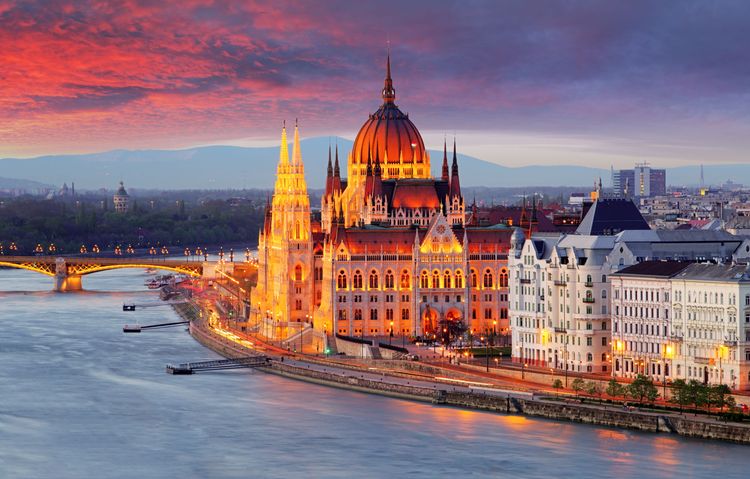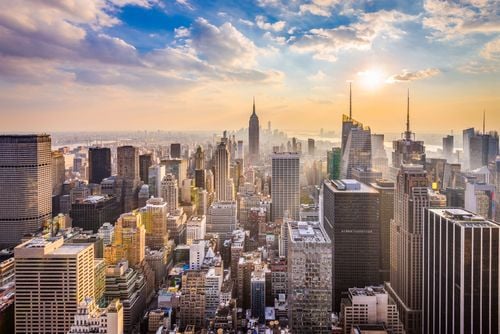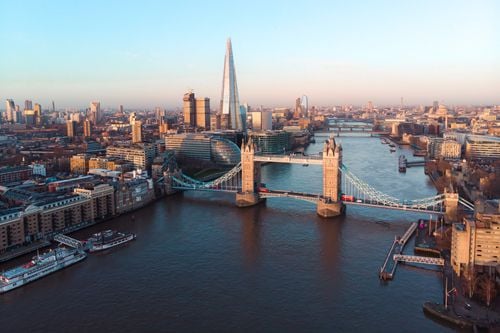Heroes' Square first appeared in the city at the end of the 19th century, in 1894 to celebrate the 1,000th anniversary of the arrival of the Hungarian tribes in the Carpathian Basin. The following years saw the birth of the two museums flanking the square: the Museum of Fine Arts and the Mucsarnok in 1895 and 1900 respectively.
Heroes' Square, known as "Hosök Tere" on the city signs, is the largest square in Budapest and one of the city's major attractions. As you approach the square, its importance is immediately apparent from the many statues that surround it. This has also earned the square UNESCO World Heritage status. The esplanade is a gigantic semi-circle that gives access to several important buildings such as the Budapest Museum of Fine Arts. The square can be seen at the end of Andràssy Avenue, one of the city's most emblematic streets. You can enjoy the square on foot along its wide pavements or by public transport on line 1, the oldest metro line in continental Europe.
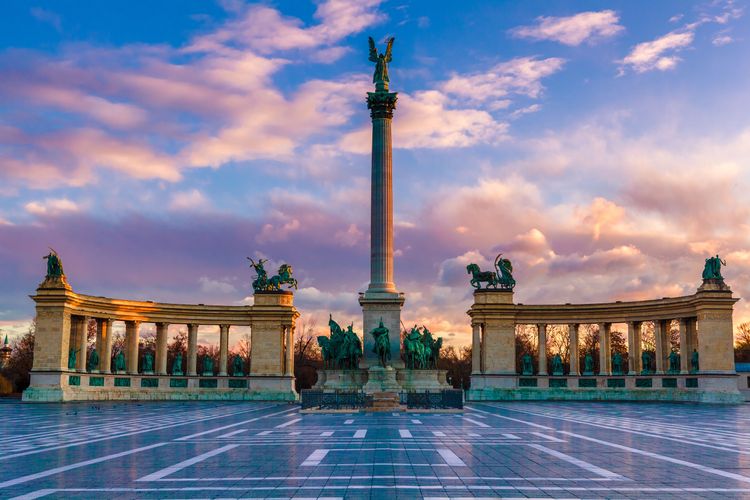
Budapest's Heroes' Square in the morning. The photo was taken after a rainstorm, so the reflection is real.
- © Tibor Balogh/Shutterstock.A place to celebrate 1000 years of history
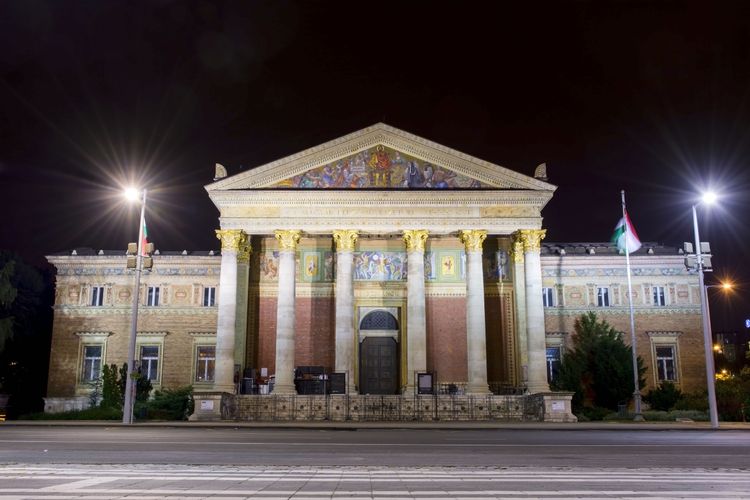
The Musée des Beaux Arts by night
- © belizar/ShutterstockSymbolic statues
The site is filled with various statues depicting some of the figures and events dear to Hungary. Most of them are grouped together on the Millennium Monument. It is made up of 7 statues around the base, topped by a larger one at the top of the central column. The latter is an effigy of the Archangel Gabriel, who is said to have appeared in a dream to Stephen I (975-1038), the first king of Hungary and founder of his kingdom. The angel is said to have offered him the crown to rule. As for the seven horsemen below, they are the chiefs of the 7 Magyar tribes. One of them is Árpád, known as the man who led these peoples to the Carpathian Basin, the first occupation of what is now Hungary by the ancestors of the Hungarians. These seven leaders are represented in other parts of the capital, such as the banks of the Danube and the Fishermen's Bastion.
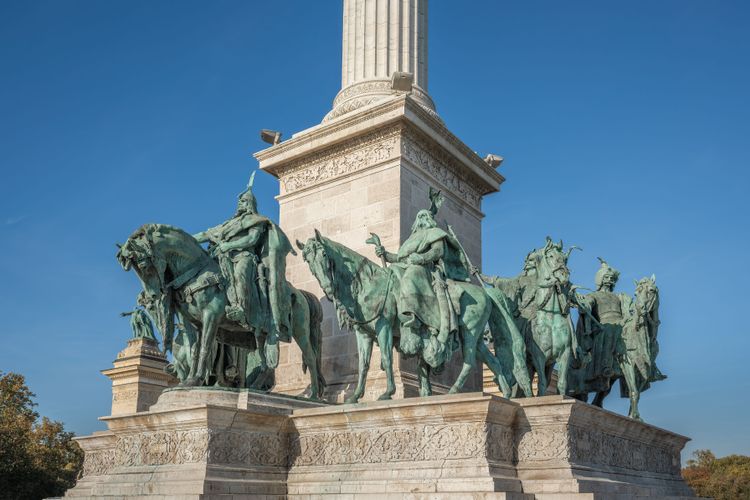
Seven Heads of Magyar Sculptures (Arpad, Tas, Huba and Tohotom or Teteny) at the Millennium Monument in Heroes' Square - Budapest, Hungary
- © Diego Grandi/Shutterstock.There are 14 other statues in the square. These include 9 Hungarian kings, ranging chronologically from Stephen I to Matthias I (1612-1619). Then there are 5 more. Originally, these 5 statues were those of Habsburg emperors, because when the monument was built, Hungary was part of the Austro-Hungarian Empire. However, the statues disappeared from the square after the Second World War, when Hungary became a Communist dictatorship. Since then, they have been replaced by Hungarian heroes. These were mainly noblemen or opinion leaders who had fought against the Habsburg regime. Although under the Communist regime the square was used as a place where the population was forced to gather for party celebrations, today, fortunately, it is a place for strolls and gatherings on national holidays, as well as being a major tourist attraction.
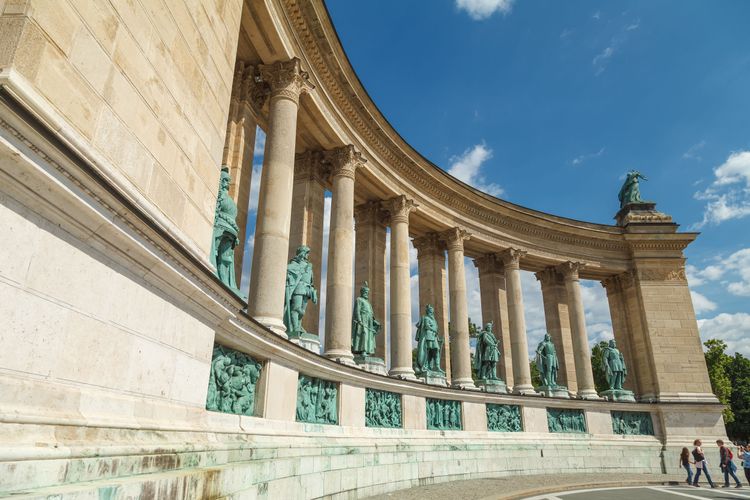
Budapest, Hungary, June 1, 2019 Heroes' Square, Budapest, Hungary.
- © alex_gor/Shutterstock.Above the colonnades featuring statues of Hungarian kings and heroes, there are 4 allegorical statues, each representing an idea. The first, on the far left, is a couple representing the country's work and wealth. Then, in the centre left, a man armed with a snake symbolises war. Then, in the centre right, a female figure is the allegory of peace. And finally, on the far right, another couple are ambassadors of knowledge and glory.
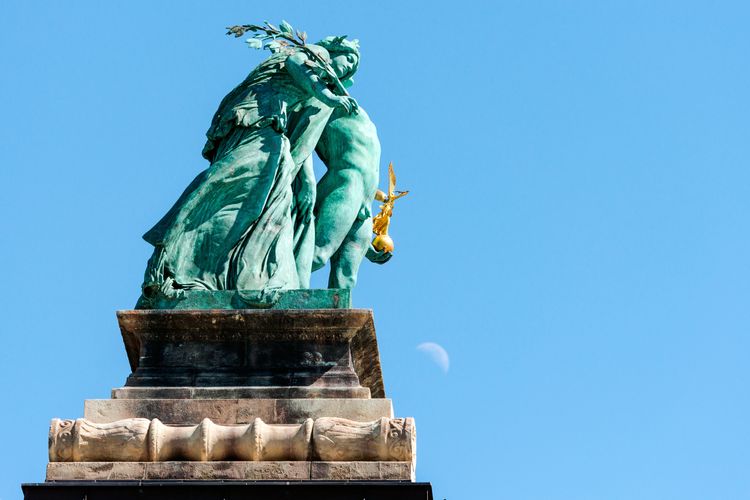
Bronze statues on the colonnade of the Millennium Monument (built in 1896) on Heroes' Square in Budapest, Hungary.
- © Andreas Wolochow/ShutterstockIf the post-Second World War period produced statues of Hungarian heroes, the post-First World War period also added a monument. Hungary also has a tomb dedicated to the unknown soldier. It does not contain any remains, but is a memorial to the Hungarian soldiers who fell in the war. Built in 1920, it was demolished in 1951 and replaced in 1956 by a new version on the same site, at the foot of the Millennium Monument.
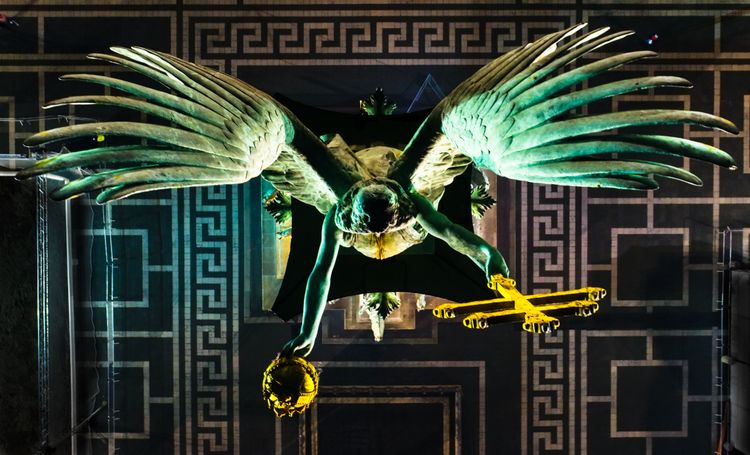
Aerial photo taken with a drone of the statue of Archangel Gabriel on Heroes' Square in Budapest.
- © Gyorgy Keszthelyi/ShutterstockActivities around the monument
For art lovers, there's plenty to do on site! Opposite the Millennium Monument are two large buildings on either side, with the Museum of Fine Arts on the left and the Museum of Contemporary Art, the Műcsarnok, on the right. While the latter is more for connoisseurs, the former is accessible to all, even the youngest. It boasts Hungary's largest art collection, as well as masterpieces by the likes of Picasso and Raphael. The youngest visitors will be delighted to discover the mummies that inhabit the premises. What's more, admission is free for children under 6, while parents will have to pay the modest sum of 3,400 Ft (around £7).
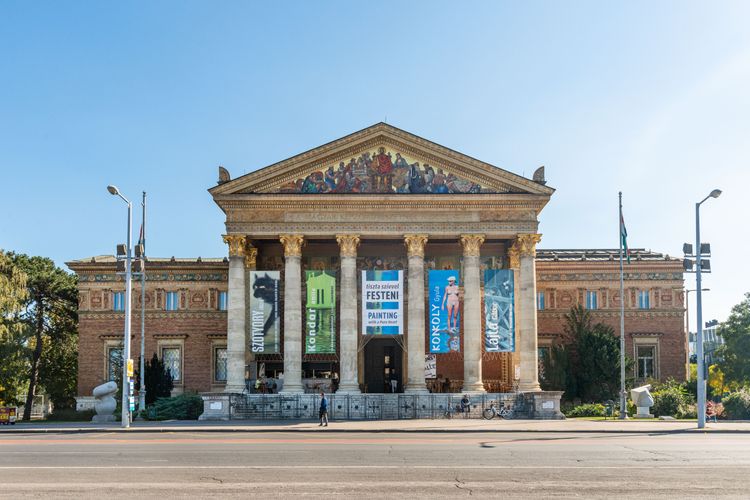
Budapest, Hungary - October 1, 2019: Műcsarnok Museum
- © Nenad Nedomacki/ShutterstockFurther along, in the superb avenue Andràssy, there are other places not to be missed. Firstly, the opera house, one of the city's proudest achievements. Renovated in 2020, the venue can now be visited without attending a full performance. The tour in English lasts 1 hour and includes a 10-minute concert. The guide recounts the history of the building and manages to captivate visitors with historical, artistic and architectural anecdotes. Then, as you wander further afield, you come across the Museum of Terror, known for its impressive roof. It focuses on the difficulties experienced by Hungary after the Second World War until 1956. Between the ruthless Soviet occupation and the Hungarian fascist allies, the museum is the most morbid in the city.
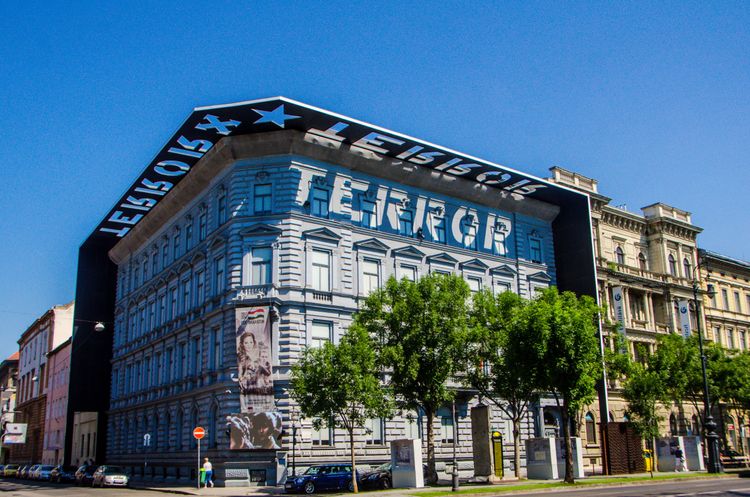
Budapest, Hungary- July 12, 2017: Museum of Terror in downtown Budapest
- © Tito Slack/ShutterstockAll in all, Heroes' Square is an unmissable part of Budapest, thanks to its history, its location and simply its architecture. To make the most of it, you can book a hotel within walking distance of the square. Some offer a direct view of the monument. The Adorable Cosy residence is just 200 metres from the square and offers comfortable rooms with kitchens equipped with fridges and ovens.
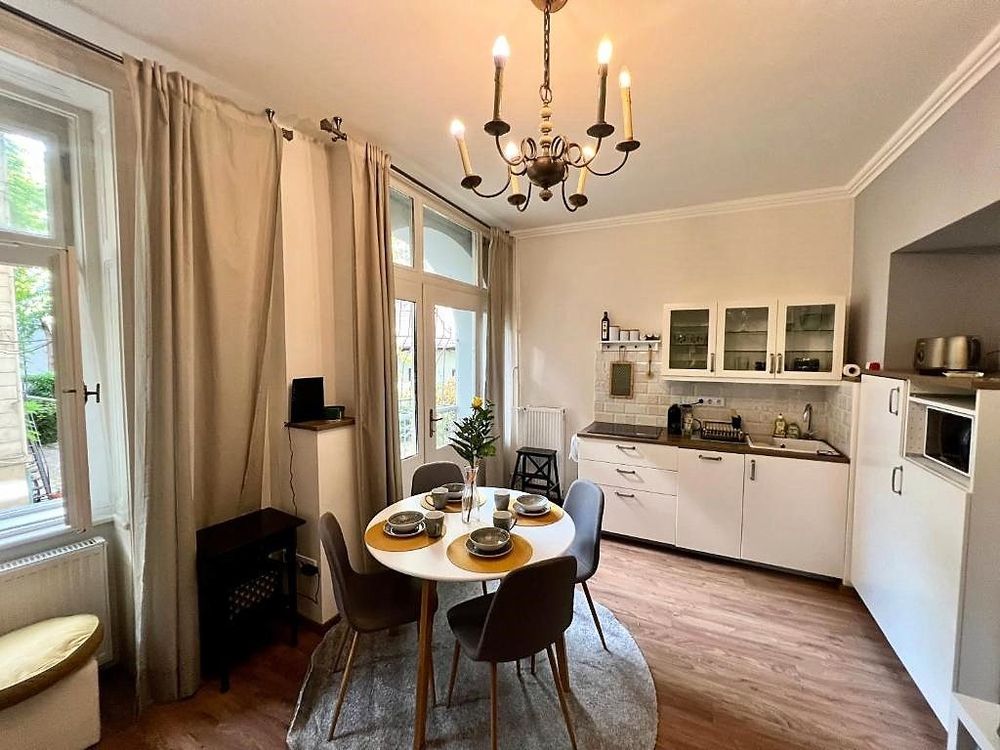 Budapest
Budapest
Adorable Cosy Apartment
Located in the centre of Budapest, close to Heroes' Square and the House of Terror, the cosy and comfortable Heroes' Square Budapest flat features free Wi-Fi, air conditioning and household amenities.Practical information
🚌 Transport: Whether you're staying in the city centre or further afield, we recommend using public transport. The various buses and trams serve the city well and the metro lines are often praised for their beauty with, for example, the M1 line, which is one of the oldest in Europe.
